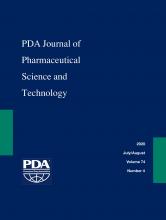Abstract
Product specifications are ideally based on knowledge of patient needs or requirements of subsequent manufacturing steps. However, in most applications, knowledge of patient needs is neither precise nor comprehensive enough to fully define specifications. The prevailing practice is to base specifications on process experience, setting limits to assure consistency of future results with initial results representative of clinical material. Developers of new medicines are often required to set initial product specifications and other limits when only small amounts of process experience have been accumulated. Product developers and health authority reviewers share the mandate to protect patients from harm and assure the effectiveness of medical products, which motivates a tendency to set limits very tight. But although tighter limits give the impression of tighter control, limits alone accomplish no reduction in the variation that exists in established processes and test methods. Limits that are too tight do not represent the natural variability of the process and test methods. Unnaturally tight limits will result in a high number of excursions beyond the limits, potentially causing discards, supply disruptions, and higher cost of goods sold. In this article, we demonstrate how to deliberately control the probability of having intervals that are too tight during the early manufacturing process.
- Specifications
- Quality by Design (QbD)
- Tolerance interval
- Product life cycle management
- Control strategy
- Process capability
- Statistical process control (SPC)
- © PDA, Inc. 2020
PDA members receive access to all articles published in the current year and previous volume year. Institutional subscribers received access to all content. Log in below to receive access to this article if you are either of these.
If you are neither or you are a PDA member trying to access an article outside of your membership license, then you must purchase access to this article (below). If you do not have a username or password for JPST, you will be required to create an account prior to purchasing.
Full issue PDFs are for PDA members only.
Note to pda.org users
The PDA and PDA bookstore websites (www.pda.org and www.pda.org/bookstore) are separate websites from the PDA JPST website. When you first join PDA, your initial UserID and Password are sent to HighWirePress to create your PDA JPST account. Subsequent UserrID and Password changes required at the PDA websites will not pass on to PDA JPST and vice versa. If you forget your PDA JPST UserID and/or Password, you can request help to retrieve UserID and reset Password below.






